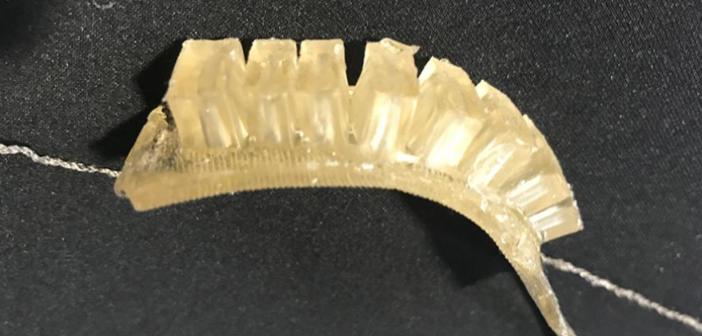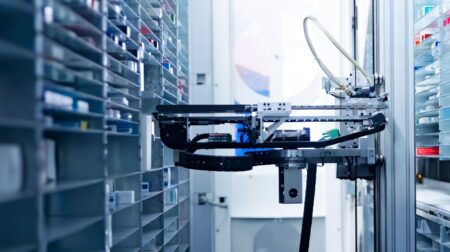Researchers have developed self-healing, biodegradable, 3D-printed materials which could be used in the creation of realistic artificial hands and other soft robotics.
The material, described as low-cost and jelly-like, has been designed to sense strain, temperature and humidity.
According to the University of Cambridge team, soft sensing technologies could transform robotics, tactile interfaces and wearable devices, among other applications. However, most soft sensing technologies aren’t durable and consume high amounts of energy.
“Incorporating soft sensors into robotics allows us to get a lot more information from them, like how strain on our muscles allows our brains to get information about the state of our bodies,” said David Hardman from Cambridge’s Department of Engineering, first author of the paper, published journal NPG Asia Materials.
As part of the EU-funded Self-HEaling soft RObotics (SHERO) project, Hardman and his colleagues have been working to develop soft sensing, self-healing materials for robotic hands and arms. These materials can detect when damaged, take the necessary steps to temporarily heal and then resume work – all without the need for human interaction.
“We’ve been working with self-healing materials for several years, but now we’re looking into faster and cheaper ways to make self-healing robots,” said co-author Dr Thomas George-Thuruthel, also from the Department of Engineering.
Earlier versions of the self-healing robots needed to be heated in order to heal, but the Cambridge researchers are now developing materials that can heal at room temperature, which would make them more useful for real-world applications.
“We started with a stretchy, gelatine-based material which is cheap, biodegradable and biocompatible and carried out different tests on how to incorporate sensors into the material by adding in lots of conductive components,” added Hardman.
The researchers found that printing sensors containing sodium chloride – salt – instead of carbon ink resulted in a material with the properties they were looking for. Since salt is soluble in the water-filled hydrogel, it provides a uniform channel for ionic conduction – the movement of ions.
When measuring the electrical resistance of the printed materials, the researchers found that changes in strain resulted in a highly linear response, which they could use to calculate the deformations of the material. Adding salt also enabled sensing of stretches of more than three times the sensor’s original length, so that the material can be incorporated into flexible and stretchable robotic devices.









